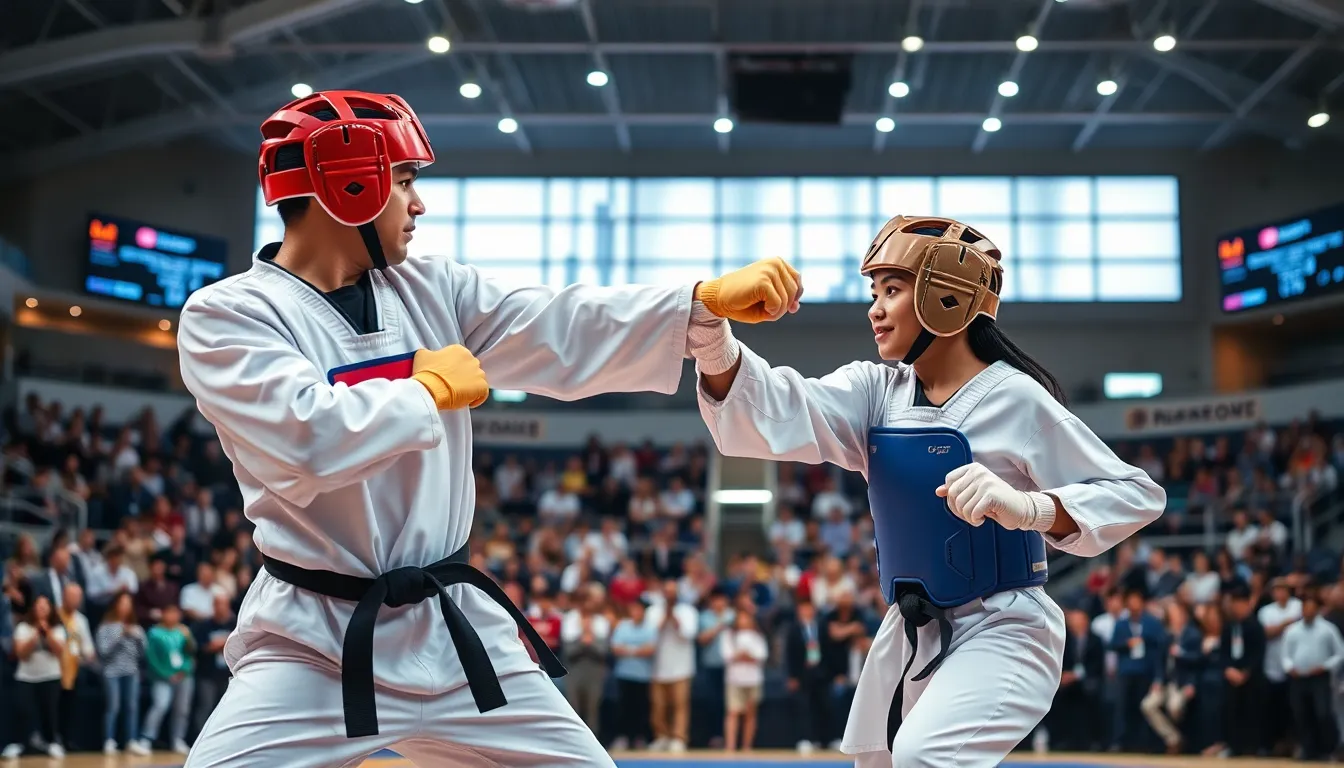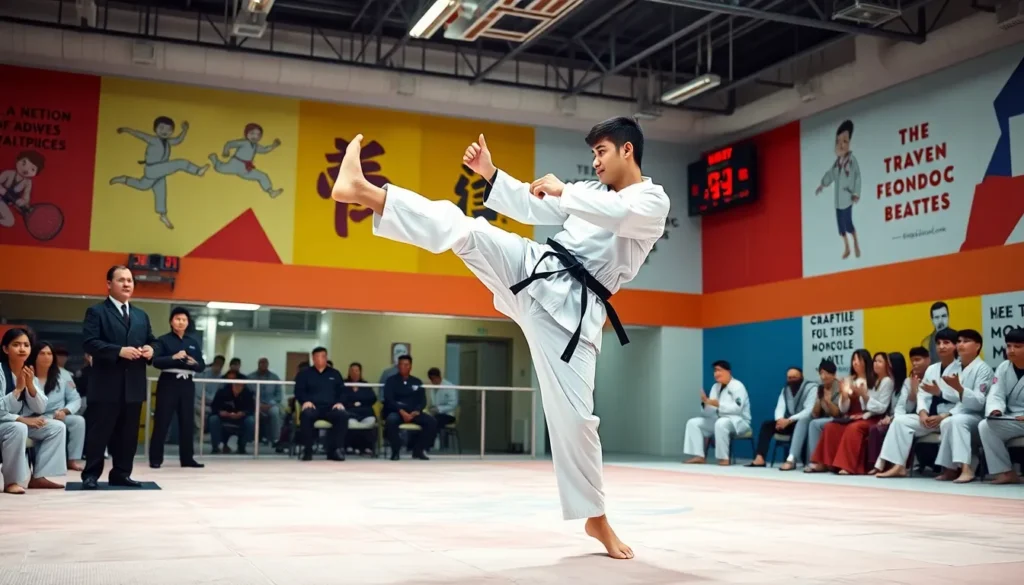Table of Contents
ToggleHave you ever wondered what goes down in a taekwondo bout? It’s not just an intense display of high kicks and rapid footwork: it’s a beautifully choreographed mix of strategy, skill, and a sprinkle of theater. In this text, we jump into the world of taekwondo bouts, dissecting the rules, types, and preparation strategies that elevate competitors from novices to champions. Ready to kick it up a notch? Let’s jump in.
Understanding Taekwondo Bouts

Taekwondo bouts are structured engagements where skill, strategy, and discipline come together to showcase martial arts prowess. But what makes these bouts tick?
Rules and Regulations
Every sport has its rules, and taekwondo is no exception. Sparring, or the bout, follows a comprehensive set of guidelines established by organizations like the World Taekwondo Federation. For instance, competitors must wear protective gear, including a helmet, a chest protector, and foot protection. The use of illegal techniques, such as strikes to the back of the head or excessive contact, can lead to penalties. Understanding these regulations is crucial: any careless move can change the tide of the match.
Scoring System Explained
In a taekwondo bout, points are awarded based on the quality and technique of a strike. A kick to the head may garner significantly more points compared to a punch to the body. Also, the scoring system often includes a judging panel that evaluates each bout based on performance. This subjective element introduces a fascinating layer of strategy, as athletes must not only score points but also do so in a way that impresses judges.
Different Types of Bouts
Not all taekwondo bouts are created equal. They vary significantly based on the context and style, significantly impacting how competitors prepare and perform.
Olympic vs. Traditional Taekwondo Bouts
Olympic taekwondo focuses on a point-based scoring system, emphasizing speed and agility. In contrast, traditional bouts often allow for a wider range of techniques and focus on the artistry of the martial art. Athletes need to tailor their training to focus on the specific requirements and expectations of the type of bout they will experience, which could range from sparring in local clubs to competing on an Olympic stage.
Competitions and Championships
Taekwondo is not just about individual bouts: it’s a community driven by competition. Major tournaments help elevate the sport in a big way.
Major Taekwondo Tournaments
Events like the World Taekwondo Championships and the Olympic Games are the pinnacle of competitive taekwondo. Athletes train for months, if not years, specifically for these tournaments. The atmosphere is electric, combining the thrill of competition with national pride. When an athlete steps onto the mat during such a tournament, they’re not just representing themselves: they’re embodying the spirit of their country.
Preparing for a Taekwondo Bout
Preparation is key in taekwondo. Without the right training regime, even the most talented athletes can falter.
Training Techniques for Competitors
Training regimens often include a mix of sparring, strength conditioning, and flexibility exercises. Competing athletes must condition their bodies effectively to withstand the rigors of a bout. Workshops and seminars led by seasoned taekwondo practitioners can offer invaluable insights, enhancing competitors’ skills.
Mental Preparation and Strategy
Besides physical training, mental preparation plays a pivotal role. Competitors need to develop strategies based on their strengths and their opponent’s weaknesses. Visualization techniques, mindfulness practices, and even psychological coaching can give an athlete the edge they need when stepping onto the mat.
The Role of Coaches and Support Staff
Behind every successful taekwondo athlete is a dedicated team of coaches and support staff, often working tirelessly to ensure the competitor’s success.
Importance of Coaching in Taekwondo Bouts
Coaches play a crucial role in honing an athlete’s skills, offering guidance and tactical advice during training and competitions. A strong coach-athlete partnership can greatly enhance performance. The right coach often becomes a mentor, motivating athletes to push beyond their limits.
Building a Supportive Environment
Creating a supportive atmosphere extends beyond the coaching staff. Family, friends, and fellow competitors contribute to an athlete’s morale. When a support system thrives, athletes feel more confident and are better prepared to face their bouts.




